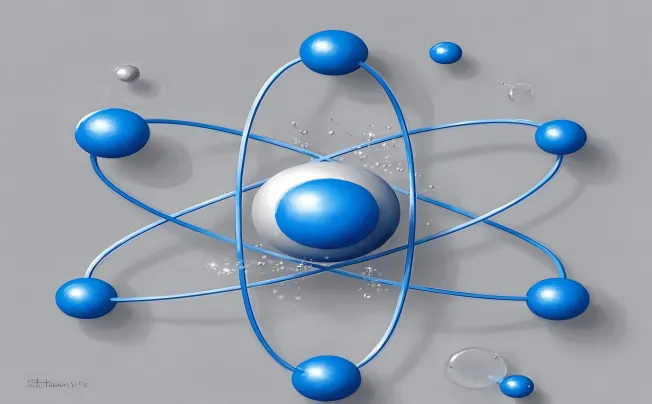Why Do You Add Silicon To Iron?
Iron, one of the most abundant elements on Earth, plays a pivotal role in numerous industries that underpin modern civilization. Its exceptional strength, durability, and versatility have made it an indispensable material across various applications.
Adding Silicon To Iron
To enhance the qualities of pure iron for specific applications or overcome its inherent limitations like corrosion susceptibility or brittleness, various alloying elements are combined with it during production processes. One such element is silicon - a versatile chemical element abundantly found in Earth's crust with diverse industrial applications beyond just contributing to the alloying process with iron. Silicon not only alters key mechanical properties but also imparts improved resistance against corrosion and enhances heat resistance.
The addition of silicon into iron alloys results in what is known as ferrosilicon - an alloy widely used across different sectors including construction engineering structures and the automotive components manufacturing industry. This remarkable synergy between silicon and iron allows industries to utilize customized alloys that possess superior characteristics to those offered by pure unalloyed iron alone.
Subtle variations in silicon content can lead to significant changes in alloy properties such as hardness, strength-to-weight ratio (specific strength), wear resistance ability (abrasion resistance), heat conductivity (thermal conductivity), magnetic permeability (magnetism), electrical conductance (electrical conductivity) making it possible for manufacturers to tailor materials according to specific requirements across different industrial applications.
Understanding why we add silicon to iron alloys fully enables us to appreciate how this versatile pairing revolutionized multiple industries globally by providing superior materials that possess enhanced mechanical characteristics while retaining most benefits associated with elemental Iron itself.
Understanding Iron and Silicon
The Properties and Characteristics of Iron
Iron is a versatile and essential metal known for its remarkable properties that make it indispensable in various industries. One of the key attributes of iron is its high strength and durability, making it a preferred choice in construction, manufacturing, and transportation sectors.
With excellent tensile strength and resistance to deformation, iron serves as a foundational material in building structures, machinery components, and vehicle parts. Its durability ensures long-term reliability in demanding applications where stability is paramount.
Another fascinating aspect of iron is its magnetic properties. Iron is ferromagnetic, meaning it can be magnetized when exposed to a magnetic field.
This property finds extensive use in electrical appliances like transformers, motors, and generators where the magnetic field generated by iron components plays a crucial role in their operation. The ability of iron to retain magnetism even after the removal of the external magnetic field makes it an ideal choice for creating permanent magnets used in various technological applications.
Iron's prevalence across construction, manufacturing, and transportation sectors underscores its importance as a foundational material driving industrial progress. In construction, iron reinforcement bars (rebar) provide structural integrity to concrete structures by withstanding tension forces.
In manufacturing processes, iron forms the backbone of heavy machinery due to its strength and machinability. Additionally, the transportation industry heavily relies on iron for vehicle production including cars, trains, ships, and aircraft components due to its durability under varying conditions.
Introducing Silicon as a Chemical Element
Silicon emerges as an intriguing chemical element with diverse applications owing to its unique properties that complement those of iron. Abundantly found in the Earth's crust primarily as silicon dioxide (silica), silicon ranks second after oxygen in terms of abundance among elements present on Earth's surface. This abundance ensures a stable supply chain for industries requiring silicon-based materials for their operations.
Beyond being plentiful, silicon plays a pivotal role across various industries such as electronics and solar energy due to its exceptional characteristics. In electronics manufacturing, silicon serves as the foundation material for semiconductors used extensively in electronic devices like computers, smartphones, and sensors owing to its semiconductor properties that enable controlled flow of electrical currents at different levels.
The Need for Silicon in Iron Production
Challenges Associated with Pure Iron Production
The production of pure iron faces significant challenges, primarily due to its inherent properties. One of the major issues is iron's susceptibility to corrosion and rusting when exposed to moisture and oxygen.
This natural tendency can limit the lifespan and effectiveness of iron-based products in various applications, necessitating a solution for enhanced durability. Additionally, pure iron often lacks the desired mechanical properties required for specific industrial uses, such as strength, hardness, and wear resistance.
Exploring the Role of Silicon as an Alloying Element
Silicon serves as a crucial alloying element in iron production, offering a range of benefits that address the shortcomings of pure iron. By incorporating silicon into iron alloys, its mechanical properties are significantly enhanced. This enhancement includes increased strength, hardness, and wear resistance, making the material more durable and suitable for demanding applications.
Furthermore, silicon improves the heat resistance of iron-based components, allowing them to withstand high temperatures without compromising structural integrity. Moreover, silicon plays a vital role in reducing brittleness in iron alloys by modifying their microstructure.
The Process of Adding Silicon to Iron
Describing Different Methods Used for Silicon Addition
Two primary methods are employed for adding silicon to iron: ferrosilicon production through a smelting process and inoculation using foundry-grade ferrosilicon alloys. Ferrosilicon is produced by smelting a mixture of silica and coke in a submerged arc furnace to obtain an alloy with varying silicon content. The concentration of silicon significantly impacts the properties of iron alloys; higher silicon content leads to improved strength and corrosion resistance.
On the other hand, inoculation involves introducing foundry-grade ferrosilicon alloys during casting processes to control graphite formation effectively. This method enhances castability while reducing shrinkage defects in final products.








